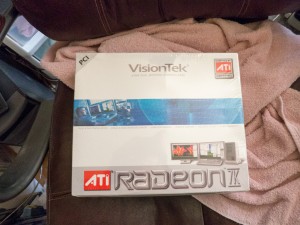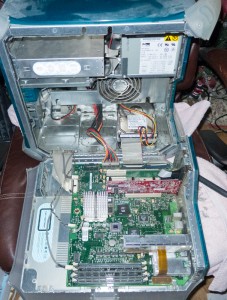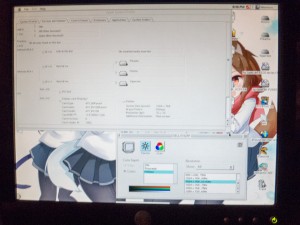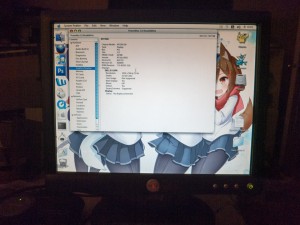
Just recently, I discovered that Connectix Virtual Game Station, which is a program that emulates a Playstation. It works great for Playstation games, especially Japanese imports after applying the patch. Since I have a PowerMac G3 Blue and White lying around for mostly for older gaming, I decided to upgrade it with an ATI Radeon 7000 since that card is easy to flash to make it Mac compatible. Not only that, ATI Rage 128 GL that came with it is just slow for games.
You can pick up a ATI Radeon 7000 PCI for cheap on eBay opposed to getting a Mac edition, which costs significantly more. However, most PC versions of the card only have a 64k ROM and since Mac ROMs are 128k, you will have to solder a new ROM so it will fit. Since I don’t feel like soldering, you can use a reduced ROM. Depending on the OEM, it might not work, but I managed to get mine working under Mac OS 9 and OS X.
For this project, I got a Visiontek ATi Radeon 7000 64 MB from eBay, which costed me $14.50. You also need the ATI Flash utilities, which you can get from this page, ATI Radeon 7000 drivers for Mac OS 9 and Radeon 9200 ROM Updater installer (for the ATI Rom Extender to make the card work fully). Lastly, I got the appropriate ROM files from Mac Elite wiki. I used the gotoh 7000 reduced rom. You also need a PC with a free PCI slot.

First, I made a FreeDOS USB stick by downloading a program from Ruufus. Then, I copied all the required files for flashing the ROM (including the reduced ROM) to the flash drive. Once you created the flash drive, install the Radeon 7000 into a PCI slot. I used a Dell Dimension 4700 to flash the ROM that had a Geforce 210 installed. You may need to hook the monitor to the PCI card.
Once booted to the USB flash drive, retrieve the list of ATI PCI devices by typing the following:
atiflash -i
It should list one PCI device. Let’s backup the rom by typing the following:
atiflash -s backup.bin
Keep this backup in a safe place if you need to restore it. Now, flash the reduced ROM by typing the following. (Note: The rom file is renamed reduced.rom)
atiflash -p 0 reduced.rom
Afterwards you can shutdown the PC and take out the PCI card. Now open up the PowerMac G3, remove the old card from the 66 MHz PCI Graphics slot, install the new one and boot the computer.

Under OS X, the graphics drivers should work out of the box. However, if you boot into Mac OS 9, you will realize that you do not have graphics acceleration. First, install the Radeon 9200 ROM update to your Mac. While the ROM updater program will not run since there is no 9200 installed, it will install the ROM Extender. This is important as it will provide the missing ROM data necessary to make the card function properly. Lastly, install the Radeon 7000 drivers and restart the computer. Now, you should have graphics acceleration.

Optional: Since I have a Radeon 7000, now I can enable Quartz Extreme, which allows Mac OS X to offload the Quartz Compositor to the GPU. It’s only enabled on AGP since PCI does not have the necessary bandwidth. However, there is a utility called PCI Extreme! that enables Quartz Extreme.
To enable Quartz Extreme, just download it and run PCI Extreme!. Afterwards, click “Use PCI.” Once patched, reboot your Mac and then go to System Profiler > Graphics. It should say “Enabled” under Quartz Extreme.

Here are the full specs of the PowerMac G3:
Model: PowerMac G3 Rev 2
CPU: 400 MHz PowerPC G3
OS: Mac OS X 10.4.11 Tiger and Mac OS 9.2.2
RAM: 448 MB of RAM (1x 128MB, 1x 256MB, 1X 64MB)
HD: 30 GB 7200 RPM Western Digital and 16 GB IBM Original Drive
Optical: NEC DVD+-RW Burner
GPU: ATi Radeon 7000 64MB (originally came with Rage 128 GL 16MB)
Extra: Linksys Wireless G Card (via Ralink PCI Drivers)
check out http://www.macos9lives.com for mac os 9 user community dedicated to audio/video 😉